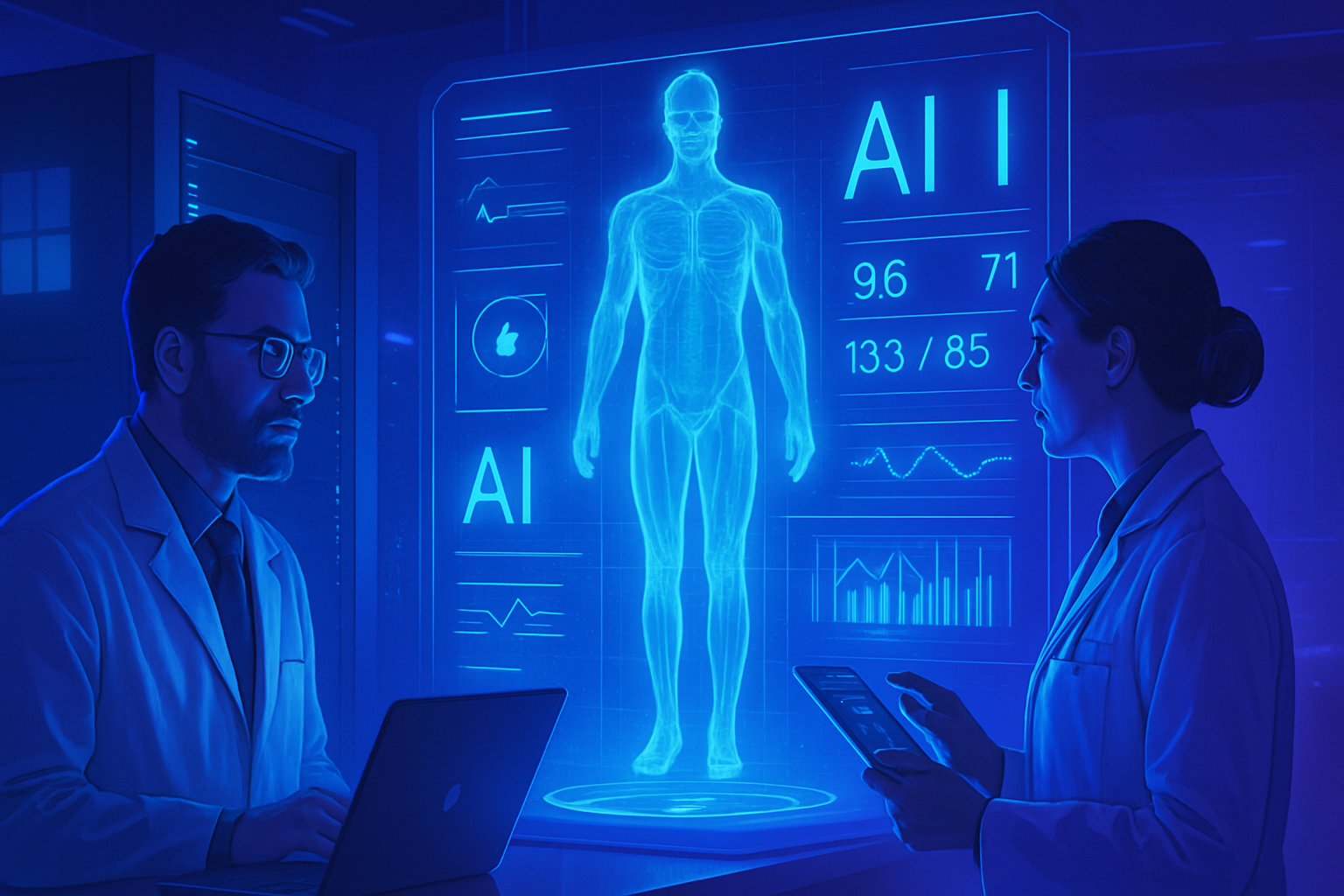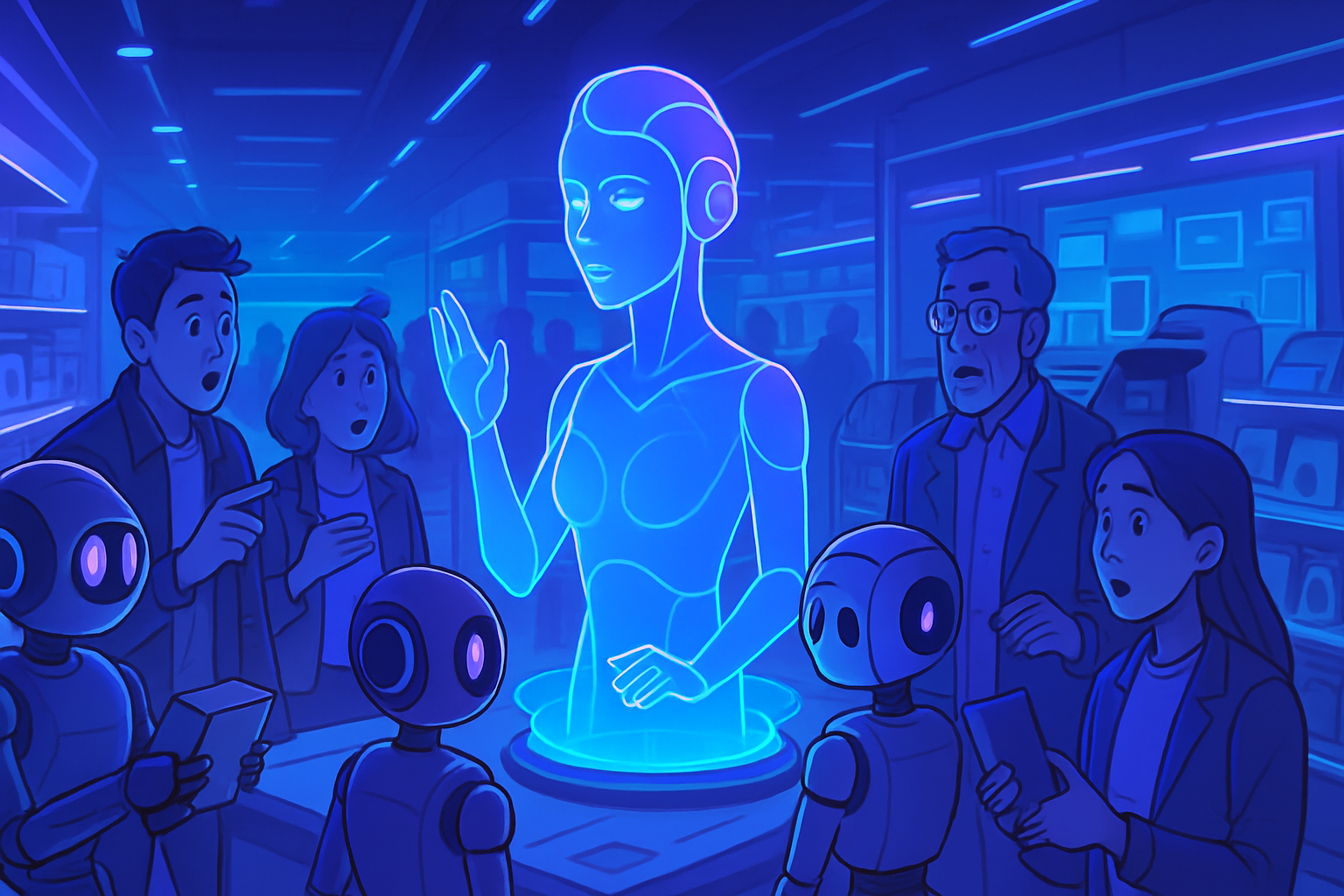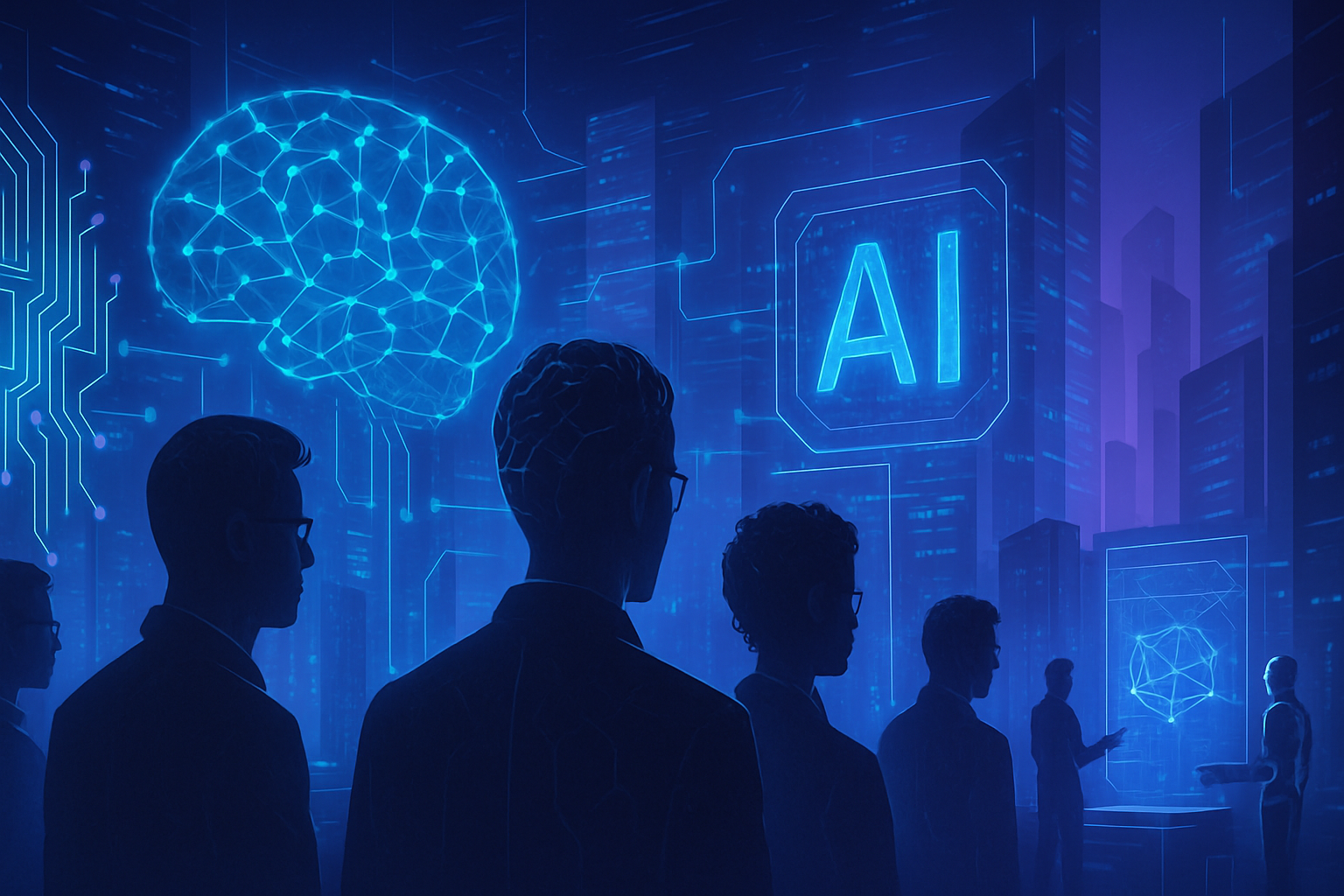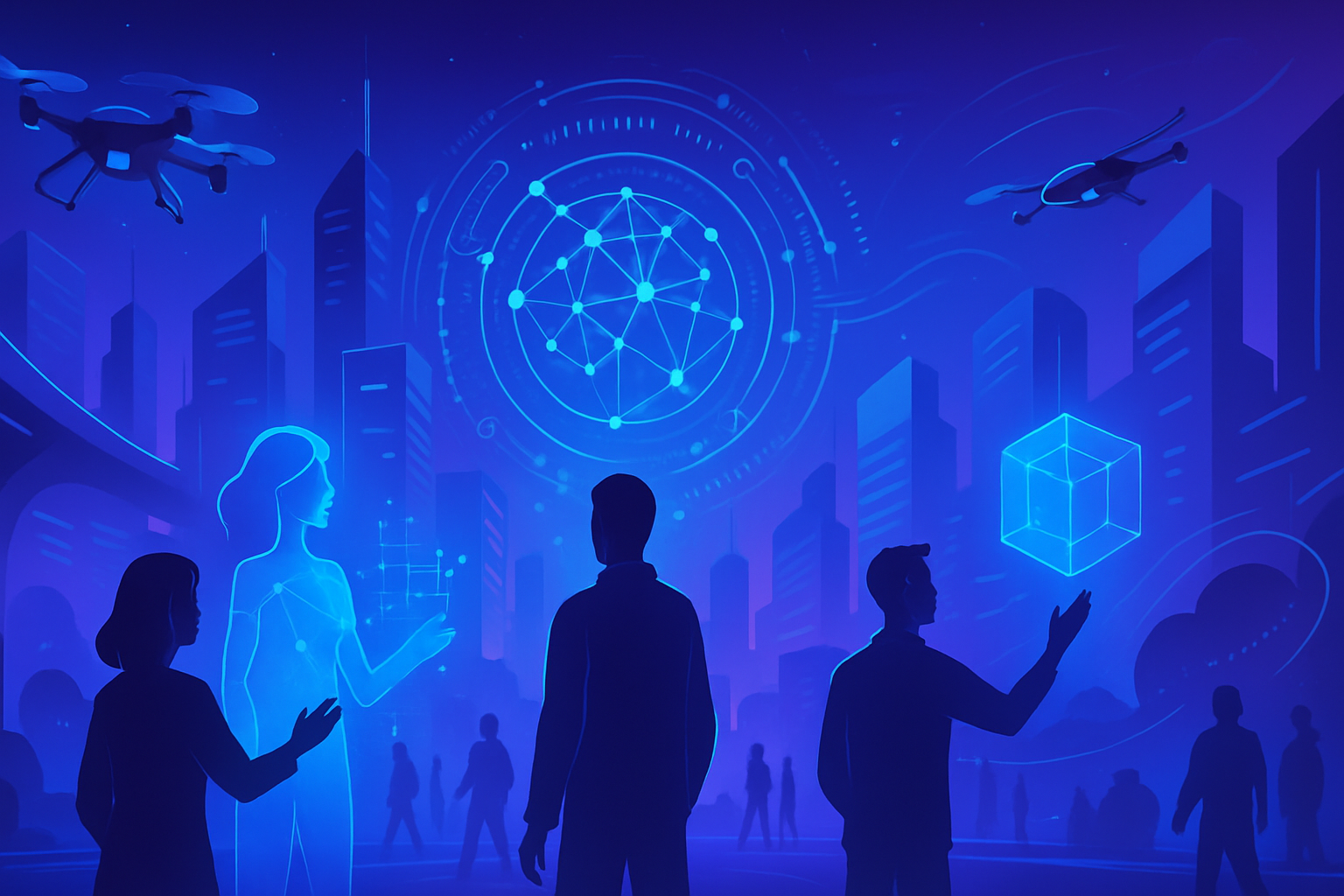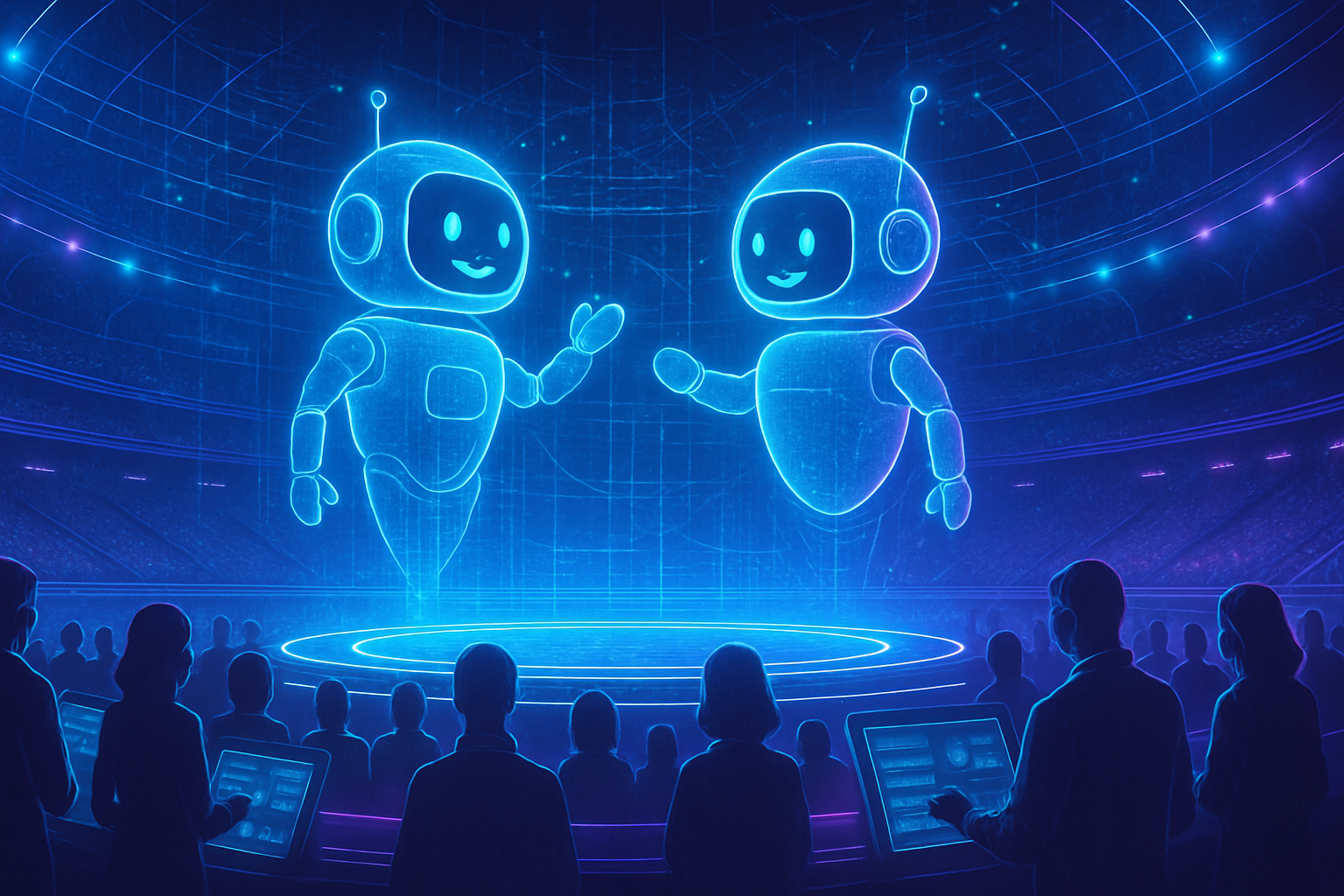The integration of generative artificial intelligence into robotic design marks a fascinating evolution. Innovative approaches optimize both the jump and the safe landing of autonomous machines. These advances raise significant issues regarding the efficiency and safety of robots.
Diffusion models, for example, are revolutionizing design processes, transforming abstract ideas into functional prototypes. The alteration of robotic structures by AI produces outcomes that transcend human imagination in the field of robotics. This creative dynamic proves to be an essential driver for improving robotic performance, making human-robot collaboration increasingly fruitful.
Exploitation of diffusion models for robotic design
Researchers from MIT, particularly those from the CSAIL lab, have recently innovated by integrating generative AI into robot design. They utilize diffusion models, allowing the creation of complex structures and autonomous control systems. The process requires users to provide a 3D model of the robot, specifying the parts to modify. Thanks to advances in algorithms, these models can not only produce novel designs but also simulate their performance before manufacturing.
Improvement of jump performance
In their work, researchers designed a robot capable of jumping to nearly two feet, surpassing the performance of a benchmark robot by 41%. The physical aspect of these machines remains similar, made of polylactic acid, although their design differs significantly. The pieces generated by AI exhibit curves reminiscent of drum sticks, while standard parts are generally straight and rigid.
Selection and optimization process
The scientists undertook a methodological approach by evaluating 500 initial designs. After assessing these options based on simulations, twelve designs were selected. An iterative process was applied, improving the vector embedding to guide the AI model towards optimized solutions. As repetitions occurred, the design evolved to possess an organic shape, termed a “blob,” which, once manufactured, proved effective in terms of jumping.
Development of a secure landing approach
An additional crucial aspect of this research concerns landing. Researchers incorporated an extra optimization phase aimed at designing an optimized foot that allows the robot to land safely. The results demonstrated an 84% reduction in falls compared to previous prototypes. This success stands as a testament to the effectiveness of AI in achieving advanced designs and optimizations.
A diffusion model with unique capabilities
The diffusion model was pivotal in overcoming typical mechanical limitations. The co-author of the research, Byungchul Kim, emphasized that AI proposed designs allowing for better energy conservation, enabling the robot to jump without weakening its connections. This type of creativity has not only optimized the physical characteristics of the robot but also allowed researchers to gain new insights into the underlying physics of the machine.
Towards new robotic applications
This approach to creation and optimization through generative AI is not limited to jumping robots. Co-author Tsun-Hsuan Wang envisions other applications where this technology could revolutionize the design of various robotic devices. By using natural language commands, diffusion models could design robots capable of carrying out diverse tasks, such as manipulating objects or using power tools.
Future explorations
This research opens up a vast field of applications. Researchers aim to incorporate more motors to direct the robot’s jumps while improving its stability upon landing. Generative AI could thus transform each robot into an adaptable prototype, innovating for industries that leverage mechanical capabilities.
Such advances could also interest companies looking to develop autonomous robots for manufacturing or daily services. The approach of diffusion models stands out for its ability to provide innovative solutions to complex problems.
For more information on the growing impact of generative AI, check recent articles on major technology players: Microsoft, ServiceNow, and Google.
Frequently asked questions about generative AI and robot performance
How does generative AI improve robots’ jumping ability?
Generative AI enables the creation of innovative and optimized designs for the robot’s connections, reducing the weight of components while increasing jumping efficiency. This is achieved through simulation and evaluation of different designs to determine the best structures for optimal jumping.
What methods are used to assess the efficiency of robots’ jumps?
Researchers use diffusion models that simulate different designs in a virtual environment. These simulations allow quantifying jump heights and landing success rates, subsequently refining designs based on the obtained results.
What role does the design of robot feet play in the success of landing?
The design of the feet is crucial as it influences stability during landing. Generative AI can optimize the shape and structure of the feet to improve ground grip and reduce the risk of falling after a jump.
Can robots designed with generative AI be manufactured using 3D printing?
Yes, designs generated by AI are often suitable for 3D printing, allowing for rapid and efficient manufacturing of prototypes. This also facilitates iteration and modification of designs.
What advantages does the use of diffusion models offer compared to traditional human designs?
Diffusion models allow the discovery of unconventional solutions that may not be considered by human designers. They can generate concepts that optimize both performance and durability, thus providing an advantage in the design process.
Is it possible to use generative AI to design various types of robots beyond those that jump?
Yes, generative AI can be applied to a variety of robots and applications. For example, it can also assist in designing robots capable of performing specific actions such as grasping objects or handling power tools, depending on the instructions provided by the user.
How does AI generate new ideas for robot designs?
AI uses embedding vectors to capture the essential characteristics of designs and presents them in various variations. By sampling a large number of potential designs, AI suggests the most performant options that are then tested in simulations.
What are the challenges of generative AI in robot design?
Challenges include the need to define clear design objectives, manage material constraints, and ensure that the generated designs can be effectively executed by available manufacturing technologies.

